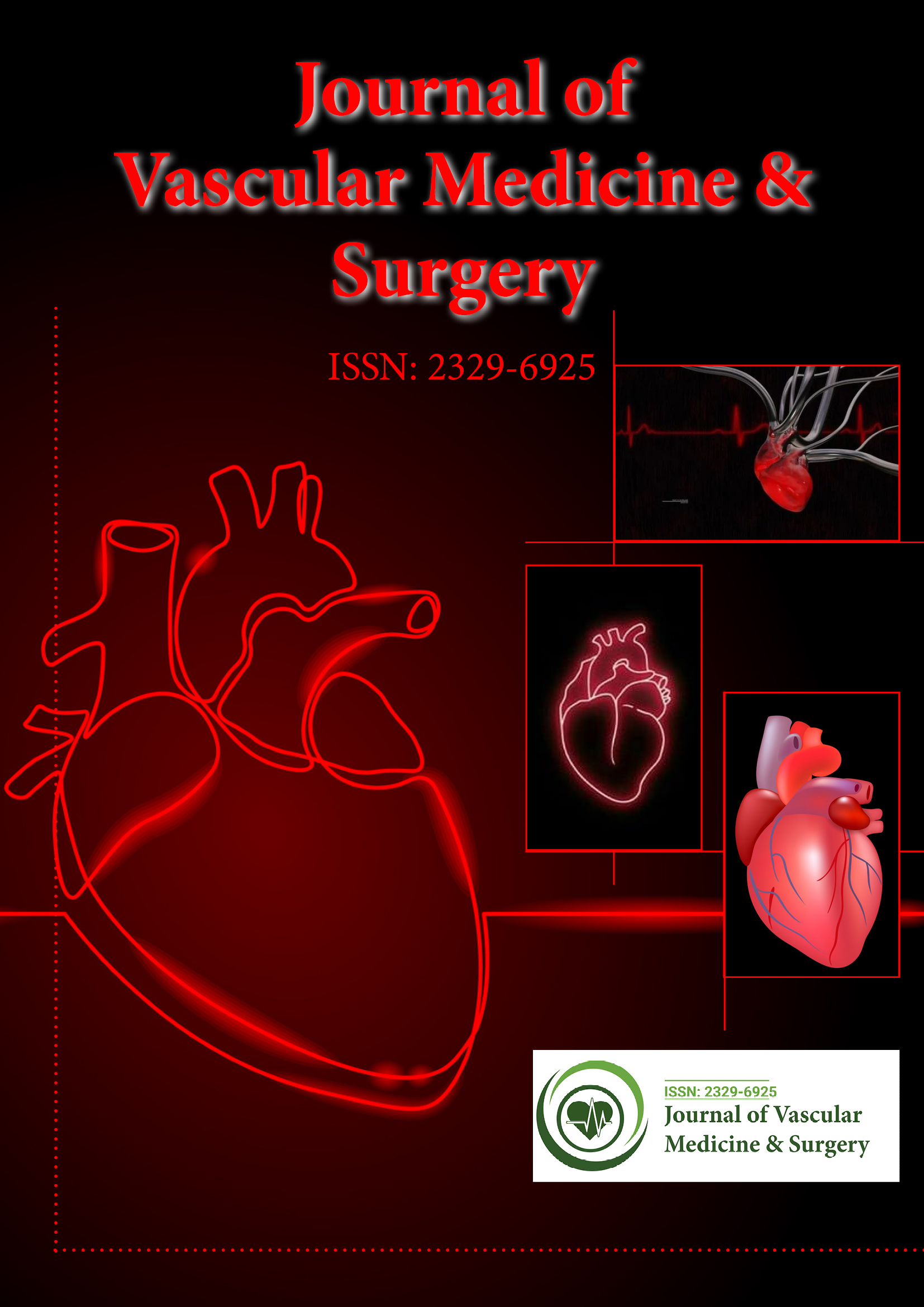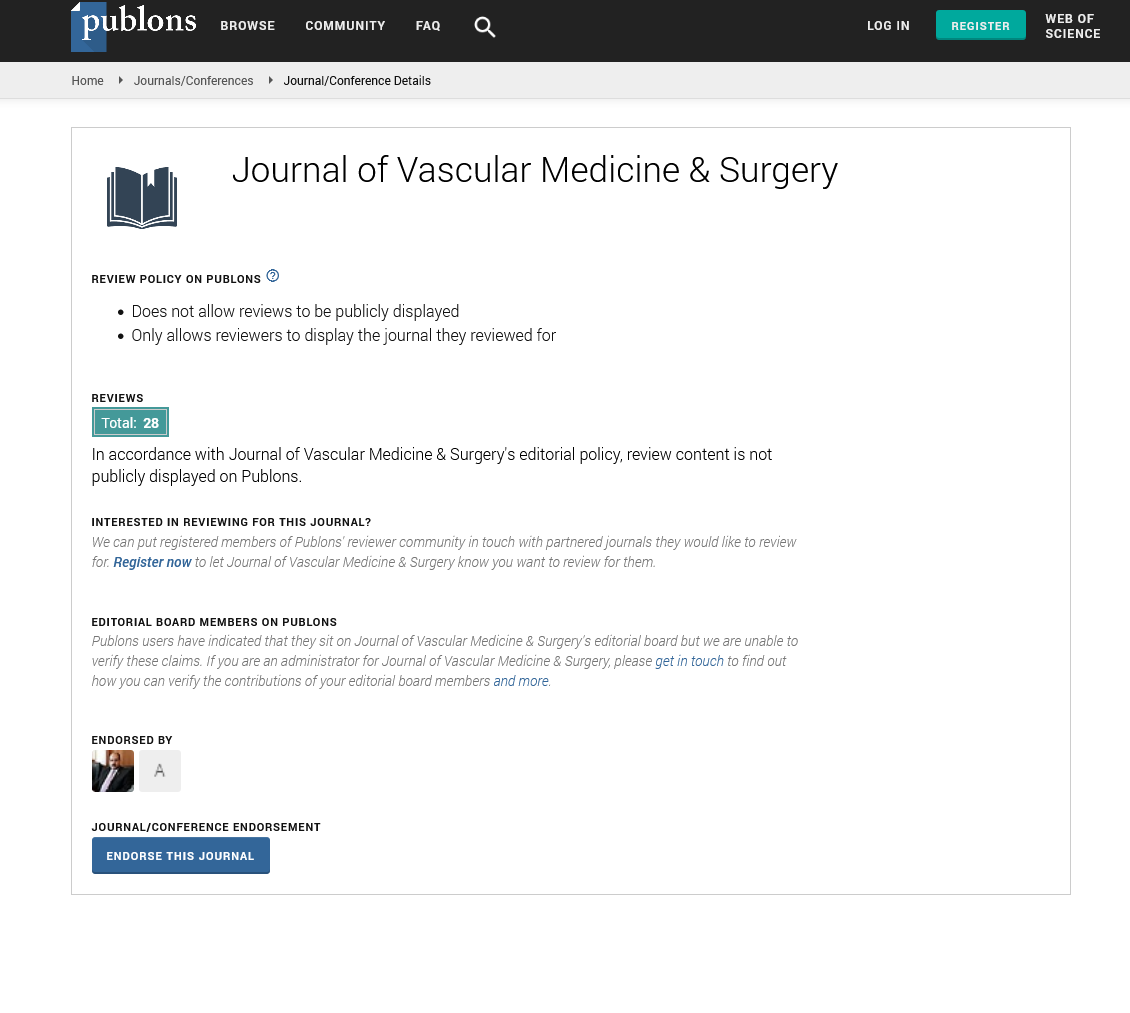Indexed In
- Open J Gate
- Academic Keys
- RefSeek
- Hamdard University
- EBSCO A-Z
- OCLC- WorldCat
- Publons
- Euro Pub
- Google Scholar
- SHERPA ROMEO
Useful Links
Share This Page
Journal Flyer

Open Access Journals
- Agri and Aquaculture
- Biochemistry
- Bioinformatics & Systems Biology
- Business & Management
- Chemistry
- Clinical Sciences
- Engineering
- Food & Nutrition
- General Science
- Genetics & Molecular Biology
- Immunology & Microbiology
- Medical Sciences
- Neuroscience & Psychology
- Nursing & Health Care
- Pharmaceutical Sciences
Opinion Article - (2024) Volume 0, Issue 0
Symptoms of Arteriosclerosis and its Risk Factors
Shenoy Blaes*Received: 26-May-2024, Manuscript No. JVMS-24-26239; Editor assigned: 28-May-2024, Pre QC No. JVMS-24-26239 (PQ); Reviewed: 12-Jun-2024, QC No. JVMS-24-26239; Revised: 19-Jun-2024, Manuscript No. JVMS-24-26239 (R); Published: 28-Jun-2024, DOI: 10.35248/2329-6925.24.S22.547
Description
Arteriosclerosis is a condition in which the arteries' walls enhance, become harder, and lose their flexibility. This can lead to limited blood flow to various organs and tissues, resulting in numerous health complications. Arteriosclerosis is a major contributor to cardiovascular diseases, including heart attack, stroke, and peripheral artery disease. Arteriosclerosis is a generalized term for many different types of artery-related disorders, including atherosclerosis, arteriolosclerosis, and Monckeberg's arteriosclerosis. While these conditions provide common features, they differ in their underlying mechanisms and affected blood vessels.
Atherosclerosis is the most common form of arteriosclerosis and involves the accumulation of plaques within the arterial walls. These plaques are consists of fats, cholesterol, calcium, and other substances. As a result, they can cause the arteries to narrow and become harder, resulting in decreased blood flow. Atherosclerosis primarily affects large and medium-sized arteries, including the coronary arteries, carotid arteries, and peripheral arteries. Arteriolosclerosis affects the smaller arteries, known as arterioles. It is frequently associated with hypertension (high blood pressure) and diabetes. In this condition, the walls of the arterioles become developed and less elastic, this results in reduced blood flow to tissues and organs.
Monckeberg's arteriosclerosis, also known as medial calcific sclerosis, involves the calcification of the middle layer of the arterial wall (the tunica media). This condition typically affects the arteries of the extremities and it is more common in elderly people.
Causes and risk factors
Arteriosclerosis is a complicated disorder caused by a combination of genetic, environmental, and lifestyle factors. Important risk factors include:
Hypertension is a major risk factor for arteriosclerosis. The constant pressure exerted on the arterial walls can cause damage and lead to the thickening and hardening of the arteries. Elevated levels of Low-Density Lipoprotein (LDL) cholesterol, frequently referred to as "bad" cholesterol, contribute to the formation of plaques in the arterial walls. High-Density Lipoprotein (HDL) cholesterol, or "good" cholesterol, helps to remove LDL cholesterol from the bloodstream. Smoking damages the endothelium, the inner lining of the arteries, increasing plaque accumulation and resulting in vascular dysfunction. It is a significant risk factor for all forms of arteriosclerosis. Diabetes, particularly for inadequately controlled blood sugar levels, it can damage the blood vessels and contribute to the development of arteriosclerosis. It is associated with both atherosclerosis and arteriolosclerosis.
Excess body weight, especially abdominal obesity, is associated to an increased risk of arteriosclerosis. Obesity frequently accompanies other risk factors such as hypertension, high cholesterol, and diabetes. Lack of physical activity contributes to the development of arteriosclerosis by increasing obesity, hypertension, and unhealthy cholesterol levels. Regular exercise helps to maintain healthy blood vessels and reduces the risk of arterial disease. A diet high in saturated fats, trans fats, cholesterol, and sodium can contribute to the development of arteriosclerosis. Consuming a balanced diet rich in fruits, vegetables, whole grains, and healthy fats is essential for cardiovascular health. A family history of arteriosclerosis or cardiovascular disease can increase an individual's risk of developing the condition. Genetic factors can influence cholesterol metabolism, blood pressure regulation, and other processes related to arterial health.
Symptoms of arteriosclerosis
The symptoms of arteriosclerosis vary depending on the affected arteries and the extent of the disease. Many individuals may not experience symptoms until the condition has developed significantly. Common symptoms include:
Chest pain (Angina): Atherosclerosis affecting the coronary arteries can lead to chest pain or discomfort, known as angina.
This pain typically occurs during physical activity or emotional stress.
Shortness of breath: Reduced blood flow to the heart and lungs can cause shortness of breath, particularly during exertion. It is a prevalent symptom of coronary artery disease.
Leg pain (Claudication): Peripheral artery disease, caused by atherosclerosis in the arteries of the legs, can result in leg pain or pressure during walking or exercise. This pain typically improves with rest.
Fatigue: Reduced blood flow to various organs and tissues can lead to feelings of fatigue and weakness. This is frequently a nonspecific symptom but it can be associated with arteriosclerosis.
Citation: Blaes S (2024) Symptoms of Arteriosclerosis and its Risk Factors. J Vasc Surg. S22:547.
Copyright: © 2024 Blaes S. This is an open access article distributed under the terms of the Creative Commons Attribution License, which permits unrestricted use, distribution, and reproduction in any medium, provided the original author and source are credited.

